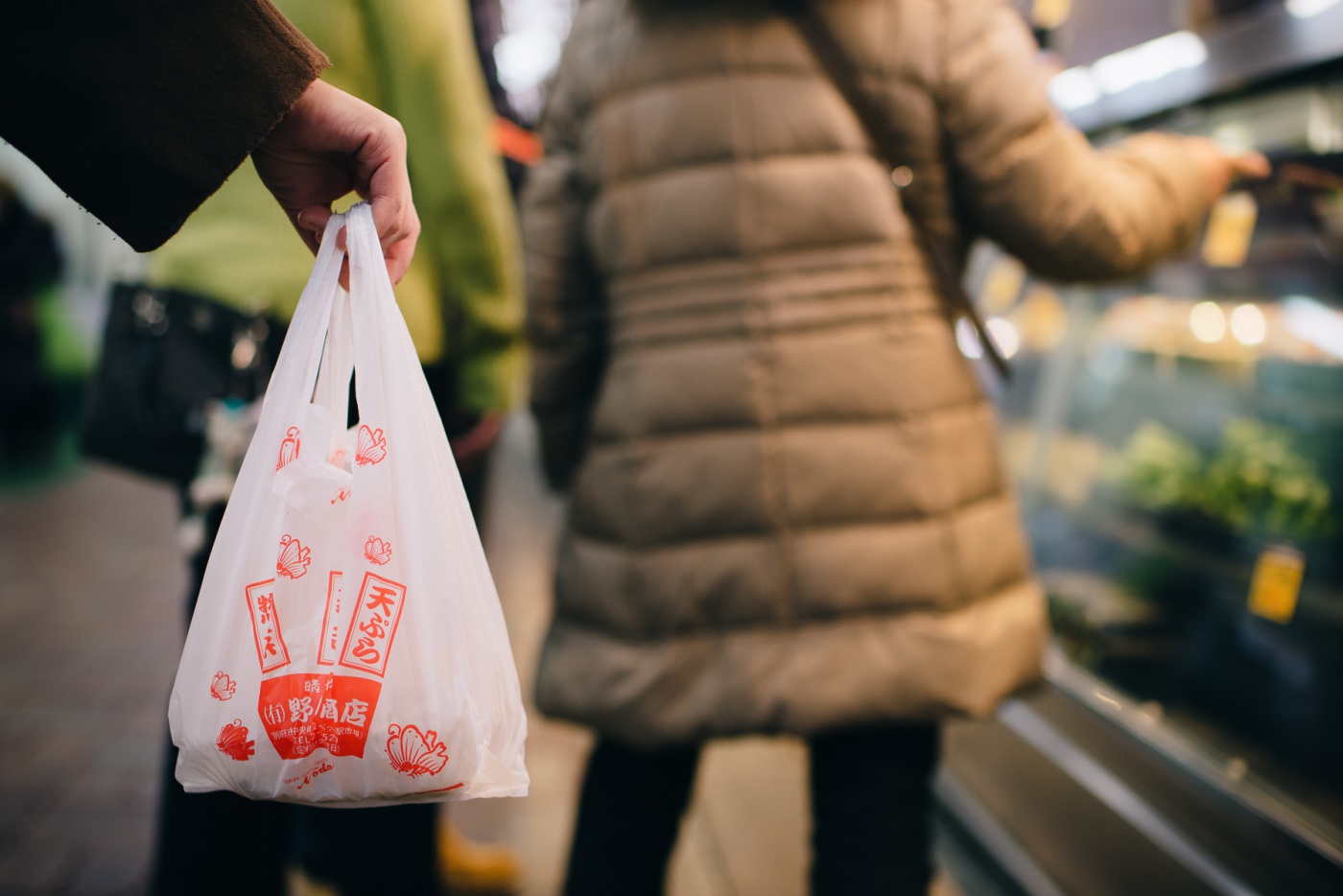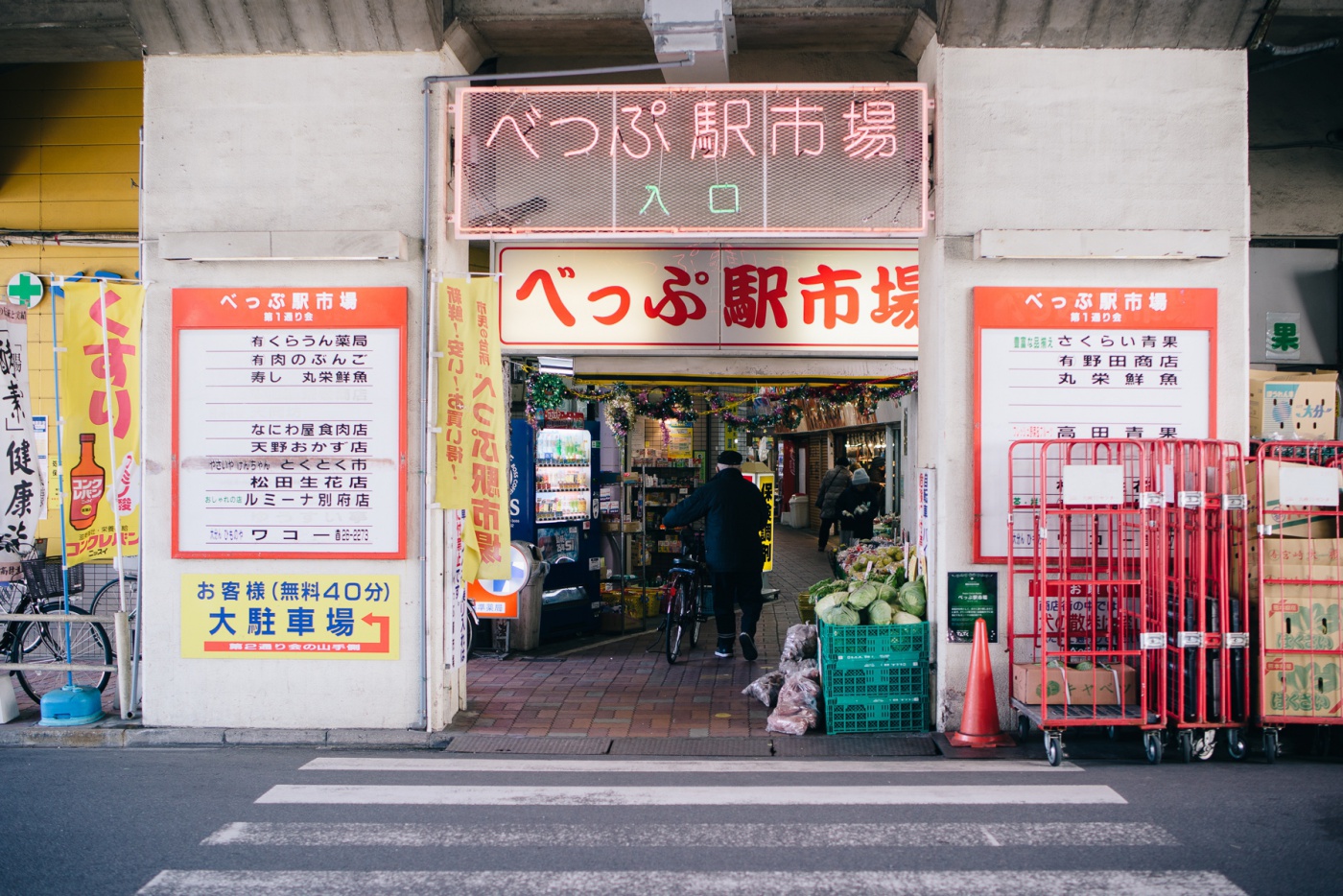
If you exit Beppu Station from the eastern gate and walk south for a bit following the raised train tracks, you will find a bright pink neon sign that marks the entrance to the Beppu Station Market. Among the various shops within the market there is one in particular that stands out – a delicatessen, bustling with locals and tourists. The shop is marked by a large sign with bold, powerful looking writing that spells out the name Noda Shoten.
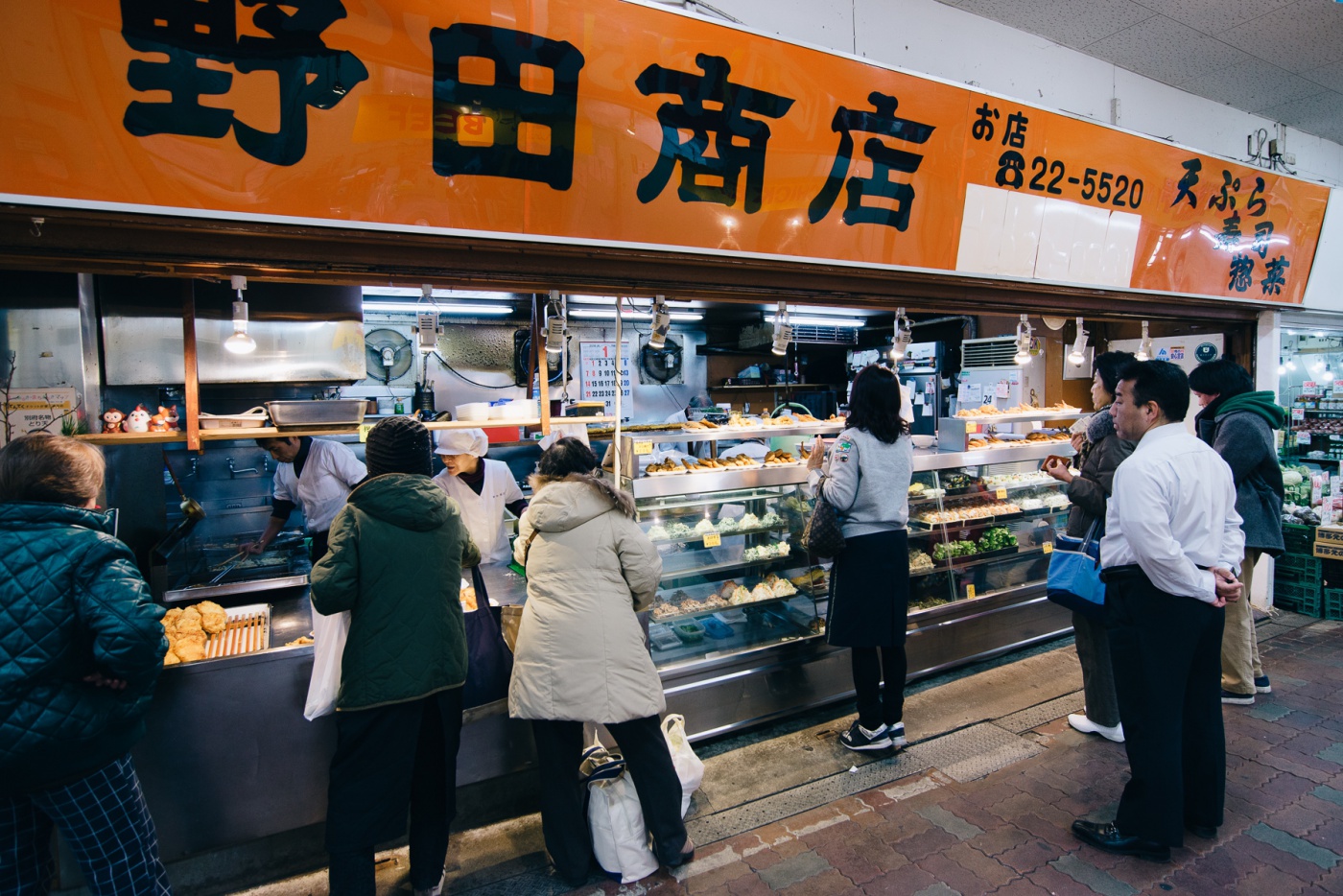
A few years back Noda-san*, the original founder of Noda Shoten, and his wife decided to retire. In searching for someone to carry on the family business, the task was given to Teruhiro Goto, the current owner and president of the company. Goto-san comes from a family that is in the distribution business, dealing primarily in Japanese seasonings and side dishes, and has a long relationship with Noda Shoten. Taking over a shop like Noda Shoten, which is deeply loved by locals, was a lot of pressure for Goto-san. However, he overcame that pressure by observing and learning from the seasoned staff who have worked here since its earliest days.
*San is a common honorific and is a title of respect comparable to Mr. or Mrs. in English.
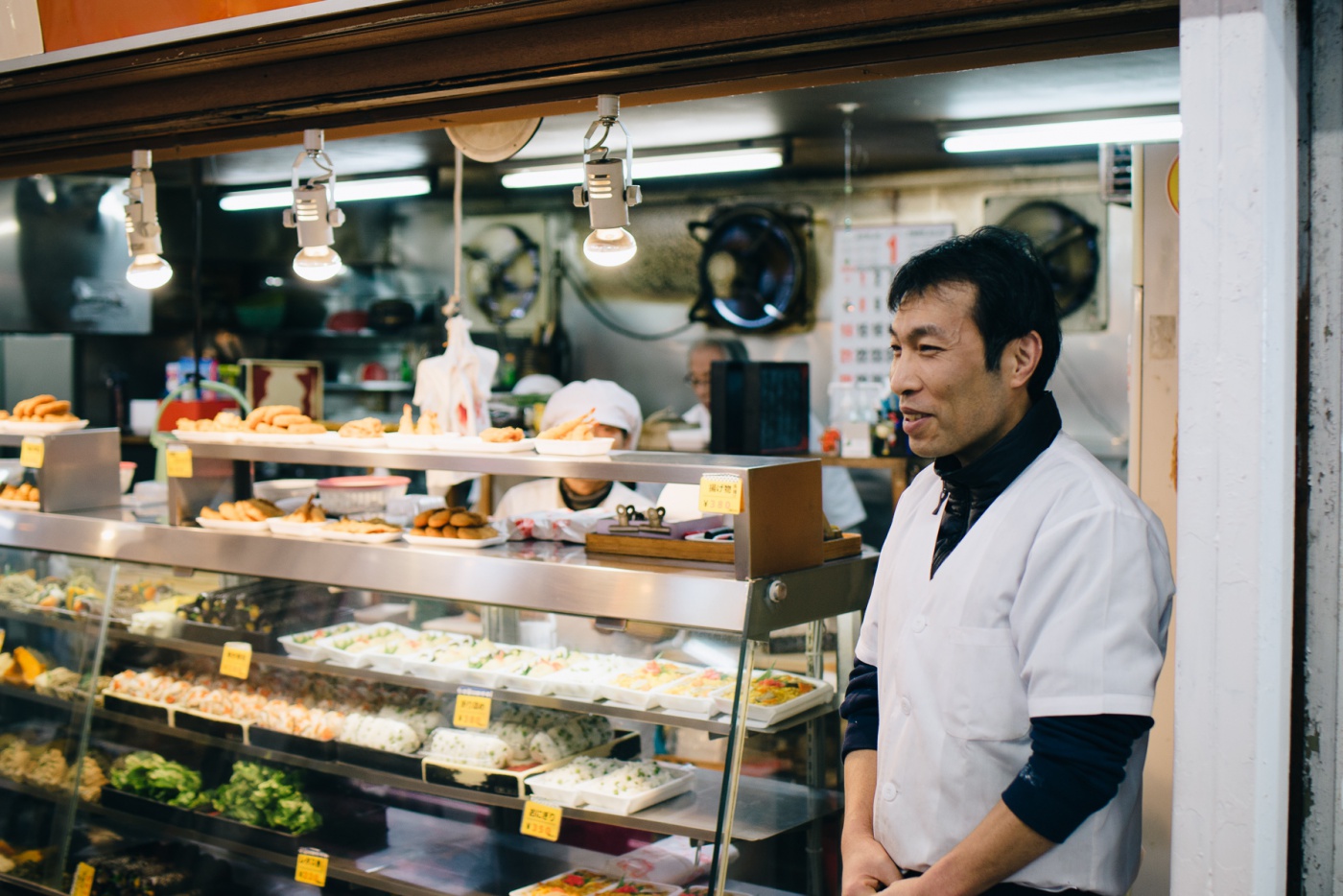
Behind the glass display case are over 30 varieties of Japanese side dishes, attracting crowds of customers every day. According to Goto-san, Obon* and New Years Holiday are quite busy, but the busiest day of the year for them is Setsubun*. One of the main reasons why is that the eating of ehomaki*, a tradition which began in Osaka, has now spread to the rest of Japan. In addition to ehomaki, Goto-san said they also sell a lot of makizushi* on Setsubun. The work of making all those sushi rolls begins late at night, prepping ingredients and cooking rice in giant metal pots. Working as quickly as possible, they are able to make around 1,000 rolls. “We open the shop and 8 AM, and before lunch time we’ll be sold out,” says Goto-san.
*Obon is a Japanese Buddhist custom to honor the spirits of one’s ancestors.
*Setsubun is the day before the beginning of Spring in Japan.
*Ehomaki is a long sushi roll traditionally eaten on the night of Setsubun.
*Makizushi is a sushi roll typically containing rice and one other ingredient.
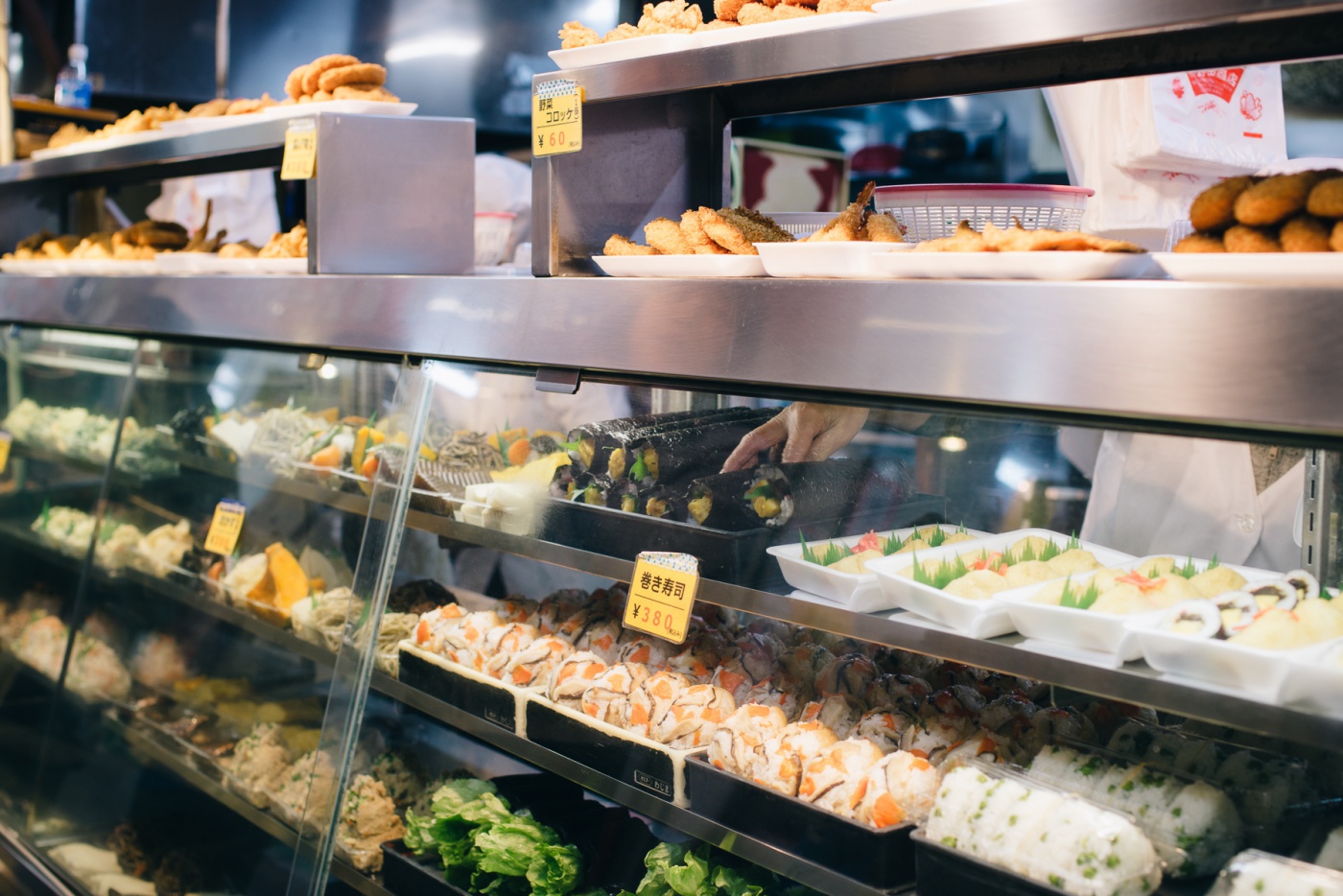
Noda Shoten opened in the 1960s, at the same time that Beppu Station’s elevated train tracks were built. “The history of Noda Shoten and the history of the Beppu Station Market go together,” says Goto-san. “Unlike supermarkets and convenience stores, you actually have to talk to people when you shop for fish, meat, and vegetables at the market. It takes a bit of courage at first, but it’s fun to walk through the market and plan what you’re going to cook over next few days.”
I carefully looked over each item behind the display case glass. After struggling to decide for a while, I finally asked for a makizushi and a tamagoyaki*, tacking on one of their delicious homemade croquettes at the last second. “The croquettes have potato, onion, carrot, and ground pork. Nothing special, but we put a lot of work into making them by hand – that’s why they sell so well.”
*Tamagoyaki is a type of Japanese omelette which is made by rolling together several layers of cooked egg.
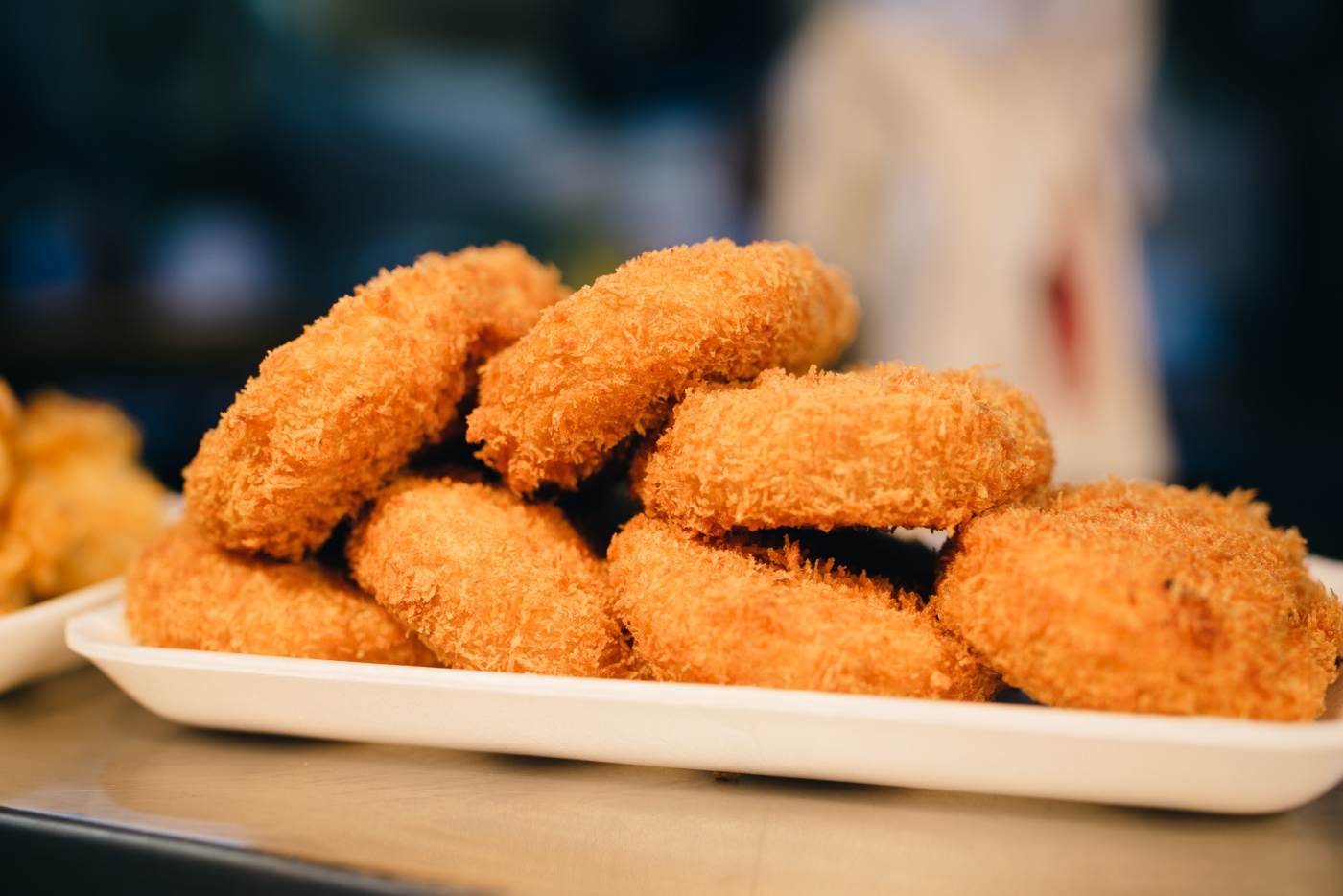
The women working hard behind the showcase know, just by the following the eyes of the shop’s many regular customers, what they came to get. “I haven’t seen you around lately.” “I was in the hospital for a few days, nothing major.” I listened to the little conversations between the regulars and the staff. “It’s a bit like the friendly atmosphere you find at onsens*,” says Goto-san. “Sometimes when regulars are chatting with the staff, I’ll see a tourist or a first-timer waiting and looking nervous. I always want to say to them, ‘don’t be shy, step right up!’ ”
*An onsen is a public hot spring.
Stuffed until nearly overflowing from its plastic package, the okara* is one of the most popular items among regulars. According to Goto-san though, he’s heard from some of their elderly customers who live alone that it’s too much to finish before it goes off. “I either tell them to freeze it, or I’ll give them a bit less if they specially request it,” says Goto-san. “Not only the taste, but the amount of food you get here is something that should never change. Keeping things just the way they’ve always been is hard, but our goal at Noda Shoten is to watch over this business while staying flexible and open to changing times.” In order for this Japanese delicatessen, loved by locals for many years, to continue serving the community, they listen to the needs of their customers and carefully guard the homemade taste that everyone has come to expect.
*Okara is a pulp consisting of parts of the soybean that remain after pureed soybeans are filtered in the production of soy milk and tofu.
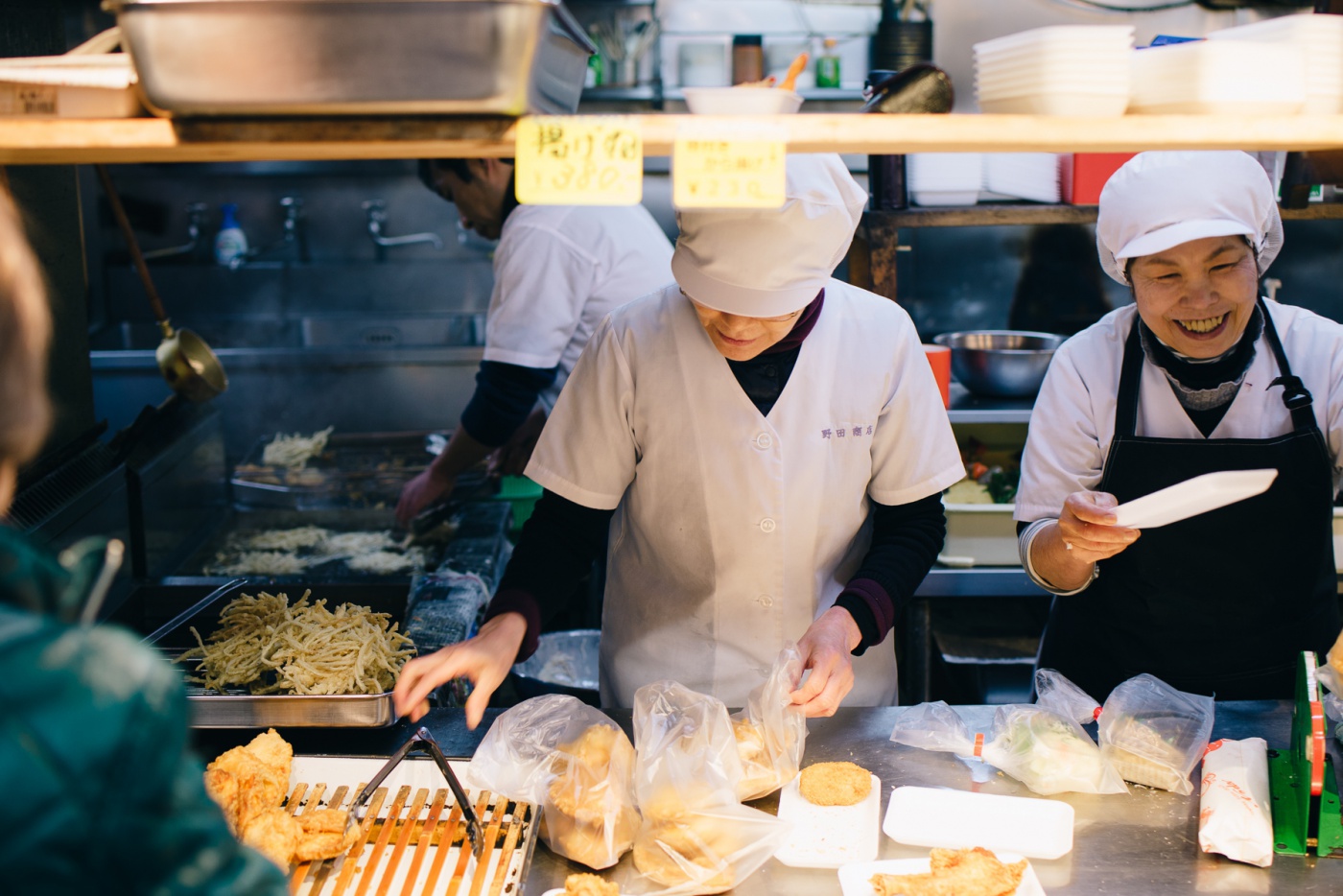
I went to the break area inside the market, delicately opened the package and promptly proceeded to stuff my face. Soy sauce and dashi* soaked kanpyō*, the fluffy egg of the tamagoyaki – so many different flavors and complementing textures. I couldn’t get enough.
*Dashi is a class of soup and cooking stock used in Japanese cuisine.
*Kanpyō are dried shavings of calabash, a type of gourd.
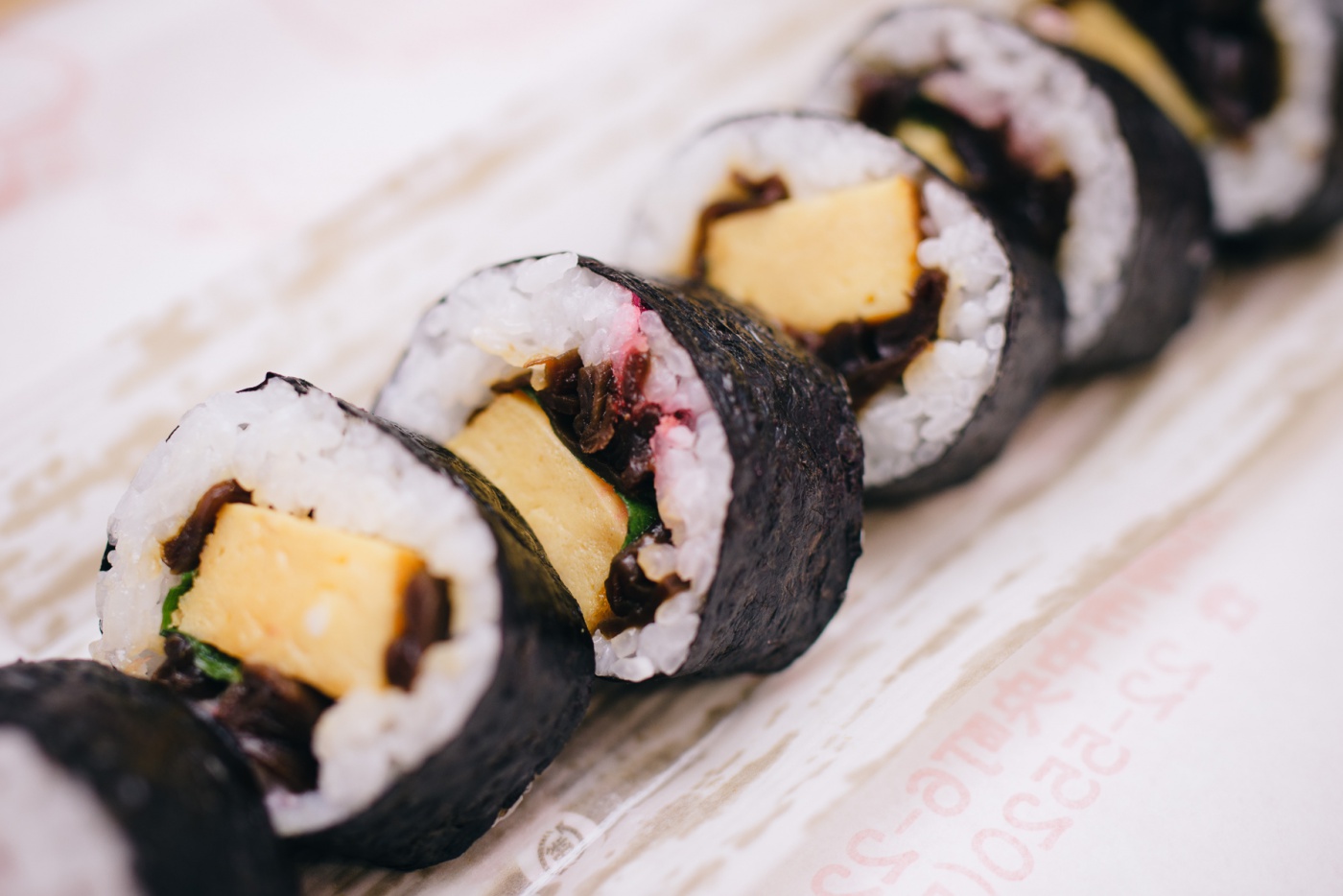
On my way back toward the station I passed by the delicatessen again to say, “it was delicious!” I still had quite a bit of food left in my shopping bag, so I decided to take it with me on a walk in Beppu Park.
